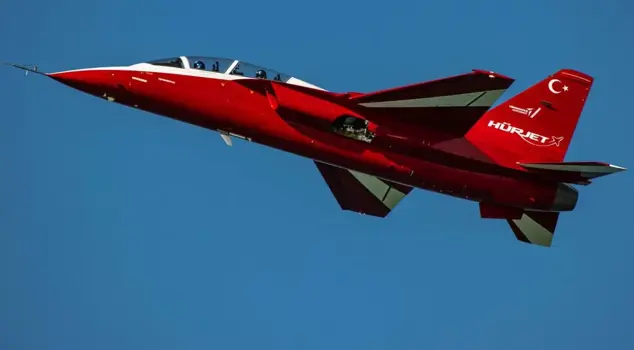
18.11.2024 15:31
The second prototype of HÜRJET, Turkey's domestic and national production, has successfully completed its flight. One of the more significant developments beyond the flight itself is the addition of launchers to HÜRJET's wings. This way, HÜRJET will gain the capability to launch missiles in air combat.
The journey of Turkey's domestic and national manned and unmanned aerial vehicles continues at full speed. The development activities of the jet training aircraft HÜRJET are one of the important milestones of this journey. The second prototype of HÜRJET, signed by TUSAŞ, recently met the sky. According to TRT News, there were also noteworthy details in this flight. For example, the nose section of the new HÜRJET was different from the first platform. There were also changes in the air intakes. Additionally, missile launchers had been added to the wings. This situation was interpreted as a precursor to ammunition firing tests with the new prototype.
We discussed the changes in HÜRJET and what this transformation means.
WHAT WILL HÜRJET BE USED FOR?
This platform can be simply defined as a 'Jet Training and Light Attack Aircraft'. Defense Industry Expert Anıl Şahin states, "The first of these will be used in the training of our fighter pilots." For example, a KAAN or F-16 pilot will first receive training on sequential aircraft. Then, they will transition to HÜRJET. On this platform, they will gain jet aircraft experience and eventually transition to KAAN or F-16," he said.
Şahin emphasizes that the light attack aircraft HÜRJET will have the capability to attack both ground and air targets. He pointed out that this version will be equipped with advanced weapon and sensor systems, including an AESA radar.
He noted that instead of sending KAAN or F-16 for every mission, HÜRJETs could be deployed, stating, "Thus, we will save both on flight costs and the airframe life of our fighter jets."
WHICH MISSILES WILL HÜRJET BE ABLE TO FIRE?
One of the most interesting details in the second prototype is the launchers mounted on the wings. Anıl Şahin mentioned that these stations will carry not only air-to-air missiles but also combat training pods referred to as 'ACMI', stating, "The launchers mounted on the wings are a critical development for the light attack aircraft configuration. Thus, air-to-air missiles can be carried at the wingtips without occupying the under-wing weapon stations."
Turkey is looking for ways to further enhance its air-to-air combat capabilities. The cost of HÜRJET is quite advantageous compared to the F-16s that we frequently use for air-to-air combat, interception, or different missions.